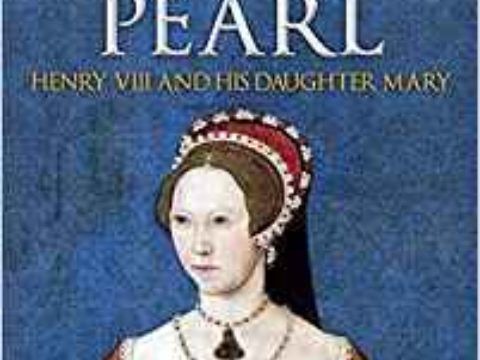Robert Dudley: Life Story
Chapter 10 : Love Interests
Whilst Robert was undoubtedly deeply emotionally attached to Elizabeth, by the early 1570s he had been widowed for over ten years – it was natural for him to seek female companionship and the physical love that Elizabeth could not give.
At some point in the early 1570s, he began a relationship with Douglass Howard. Douglass, whose first name indicates that she was the god-daughter of the queen’s cousin, Lady Margaret Douglas, Countess of Lennox, was the daughter of Elizabeth’s much favoured cousin, Lord William Howard, Baron Effingham. Douglass had come to court soon after Elizabeth’s accession, and shortly afterward married Baron Sheffield, by whom she had two children. She was widowed in 1568, and it was probably soon after this that she began an affair with Leicester.
Later, she was to claim that they had married in secret, but her claim was rejected, in part because of a letter from Robert (although it was not proven to be addressed to her) in which Robert, despite saying that he ‘[had] long liked and loved [her]’ could not marry, as he would lose the queen’s favour. He had, he added, told her this at the beginning of their relationship – he was sorry, because his brother had no children, and he would have liked to marry and produce an heir. If she wanted to marry another man, he would support her choice.
This letter, if it was to Douglass, may have been a way of trying to disengage from the affair, as by 1573, their romance was being discussed at court, and Robert no doubt feared it would come to Elizabeth’s ears. It was also reported that Douglass was at odds with her sister, Frances Howard (who was later to marry the widower of Lady Katherine Grey) who was apparently her rival for Robert’s affection. Their overt pursuit of Robert, and quarrels between themselves were disapproved of by the queen.
Robert’s affair with Douglass continued at least until late 1573, as in August 1574, she bore a son, whom Robert recognised as his own and for whose upbringing he took responsibility.
In 1575, Robert made perhaps his last serious attempt to persuade Elizabeth to marry him – he arranged the most spectacular entertainment of her reign for her eighteen-day stay at Kenilworth. Every extravagance he could think of was laid on to assure him of her love, but still she would not accede to his wishes.
Whilst Robert was coquetting with the queen, he was also, by 1575, conducting a relationship with Lettice Devereux, née Knollys, Countess of Essex. Like Douglass, Lettice was a maternal relative of the queen’s, and perhaps Robert’s penchant for women of her family suggests that he was genuinely attracted by women of her physical type.
Lettice was widowed in 1576, when her husband, Walter, 1st Earl of Essex, died of dysentery in Ireland. Essex and Robert had been on good terms previously but the friendship between the two men had soured – Essex knew that Robert admired Lady Essex, and suspected that his rival was encouraging Elizabeth to keep him in Ireland. This animosity stoked rumours that Robert had had Essex poisoned but there is no evidence to support the idea.
With Essex’ death, Lettice and her four children were left in straitened financial circumstances, but, by 1578, matters improved, as Robert and Lettice were married, quietly, but in the presence of her father, Sir Francis Knollys, on 21st September at Wanstead Hall. Sir Francis was one of Elizabeth’s most trusted councillors, so his presence would be sufficient assurance that Robert could not deny the marriage, if he had shown any signs of doing so.
In fact, Robert had no such intentions. He was deeply attached to his wife, and her children (the oldest son, Robert, now 2nd Earl of Essex, was his godson, and Lettice’s eldest daughter, Penelope, became the ward of Robert’s brother-in-law and sister, the Earl and Countess of Huntingdon.
Nevertheless, Robert hoped to keep the news from Elizabeth for as long as possible, and no-one was particularly keen to invoke Elizabeth’s wrath by being the one to break the bad news. This could not, of course, continue, and Robert’s secret was deliberately shared by M. Simier, the French envoy, whose mission to arrange the marriage of his master, the Duke of Anjou, to Elizabeth, Robert had tried to frustrate.
This French marriage seems to have been the only time when Elizabeth truly considered matrimony (unless she had contemplated it with Robert himself). Aged 45, there was little hope of an heir, but it was the moment when she realised that if she did not marry then, she never would. Having been harangued by her council and Parliament for twenty years to marry, the queen was angry and humiliated when there was widespread opposition to the match.
Cecil was in favour, but Walsingham and Knollys, the most Puritan of the council, were against the prospect of a marriage to a French Catholic. Robert, although assuring Simier that he was in favour of Anjou, was working behind the scenes to dissuade Elizabeth, so Simier reasoned that disgracing Robert in the queen’s eyes, would encourage her to proceed with the wedding.
Lord Robert Dudley
Family Tree


